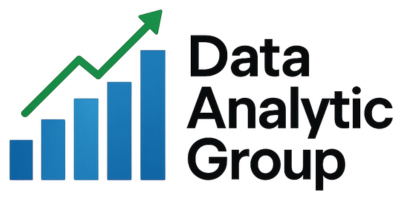DP-600: Microsoft Fabric Analytics Engineer
Course Overview:
The DP-600: Microsoft Fabric Analytics Engineer course is designed to provide learners with comprehensive knowledge and hands-on experience in end-to-end analytics using Microsoft Fabric.

In order to pass the Microsoft DP-600 exam, you will need to learn how to use SQL or the query designer to extract analytical information from a warehouse and lakehouse artifact.
In this course, Microsoft Fabric Analytics Engineer: Explore and Analyze Data, you’ll gain the ability to navigate and query data in Fabric lakehouses and warehouses to solve analytical queries. First, you will explore the Fabric service workspace enabled on a capacity. Next, you will open a lakehouse artifact to query data in a connected data lake through the new SQL query and new visual query panes. Next, you will transition to the warehouse artifact and use the tree view list to examine data from a data lake. Finally, you will discover the SQL endpoint exposed by Fabric to use SQL Server Management Studio or Azure Data Studio to query the same data.
When you are finished with this course, you will have the skills and knowledge of Microsoft Fabric analytics engineering needed to pass the DP-600 exam section on analyzing and querying data.
Target Audience for DP-600: Microsoft Fabric Analytics Engineer
The DP-600 course offers comprehensive training in Microsoft Fabric analytics, catering to IT professionals in data roles.
Data Engineers
Data Analysts
Data Architects
Data Scientists
Database Administrators
Business Intelligence Professionals
IT Managers overseeing data management teams
Cloud Solutions Architects focusing on data services
Data Security Analysts
Professionals aiming to learn about data warehousing and lakehouse architecture
Power BI Developers
Anyone seeking to specialize in Microsoft’s data analytics tools and services
Learning Objectives – What you will Learn in this DP-600: Microsoft Fabric Analytics Engineer?
This DP-600 course equips learners with end-to-end analytics skills on Microsoft Fabric, focusing on data ingestion, management, security, and optimization within the Microsoft ecosystem.
Learning objectives and outcomes:
Understand the fundamentals of end-to-end analytics using Microsoft Fabric, enabling a holistic view of data analytics processes.
Learn to administer and manage Microsoft Fabric environments effectively, ensuring smooth operation and maintenance.
Master Dataflows Gen2 in Microsoft Fabric for efficient data ingestion and processing.
Gain proficiency in using Spark and Microsoft Fabric notebooks for data ingestion and exploratory data analysis.
Develop skills to create and manage Data Factory pipelines, enhancing data integration and workflow automation in Microsoft Fabric.
Get started with lakehouses in Microsoft Fabric, learning how to leverage them for combining the best elements of data lakes and data warehouses.
Organize a Fabric lakehouse using the medallion architecture design to optimize data storage and access patterns.
Employ Apache Spark within Microsoft Fabric for large-scale data processing.
Work with Delta Lake tables in Microsoft Fabric to ensure data reliability and improve performance for batch and streaming workloads.
Learn to secure your lakehouse and data warehouses within Microsoft Fabric, emphasizing data governance and compliance.
Understand scalability considerations in Power BI to manage growing data and user demands.
Create and manage Power BI model relationships to facilitate complex data analysis and reporting.
Utilize tools and techniques to optimize Power BI performance, ensuring efficient data visualization experiences.
Enforce Power BI model security to protect sensitive data and maintain integrity across reports and dashboards.
It covers Microsoft Fabric components including:
Data Lakehouse
Eventhouse
Data Warehouse
Data Modeling
Data Transformation
Notebooks
Dataflows Gen2
Semantic Models
Course Curriculum Breakdown:
Implement Security and Governance
- Implement workspace-level access controls
- Implement item-level access controls
- Implement row-level, column-level, object-level, and file-level access control
- Apply sensitivity labels to items
- Endorse items
Maintain the Analytics Development Lifecycle
- Configure version control for a workspace
- Create and manage a Power BI Desktop project (.pbip)
- Create and configure deployment pipelines
- Perform impact analysis of downstream dependencies
- Deploy and manage semantic models using XMLA endpoint
- Create and update reusable assets: .pbit, .pbids, and shared semantic models
Get Data
- Ingest or access data
- Create and manage shortcuts
- Create a data connection
- Discover data using OneLake and Real-time hub
- Choose between lakehouse, warehouse, or eventhouse
- Implement OneLake integration
Transform Data
- Create views, functions, stored procedures
- Enrich data with new columns or tables
- Implement star schema for lakehouse/warehouse
- Denormalize, aggregate, and merge data
- Handle duplicates, nulls, and convert data types
- Filter data
Query and Analyze Data
- Use Visual Query Editor, SQL, and KQL for analysis
Design and Build Semantic Models
- Choose storage mode
- Star schema for semantic models
- Relationships: bridge tables, many-to-many
- DAX: variables, iterators, filtering, windowing, info functions
- Calculation groups and dynamic format strings
- Field parameters and composite models
- Large semantic model storage
- Aggregations
Optimize Enterprise-Scale Semantic Models
- Query and visual performance
- Improve DAX
- Configure Direct Lake behavior
---------------------------------------------
Good luck on your path to becoming a certified Fabric Analytics Engineer!
Certification

Interested?
Join the Data Analytic Group’s Power BI Mastery Program and take the next step in your data career.

